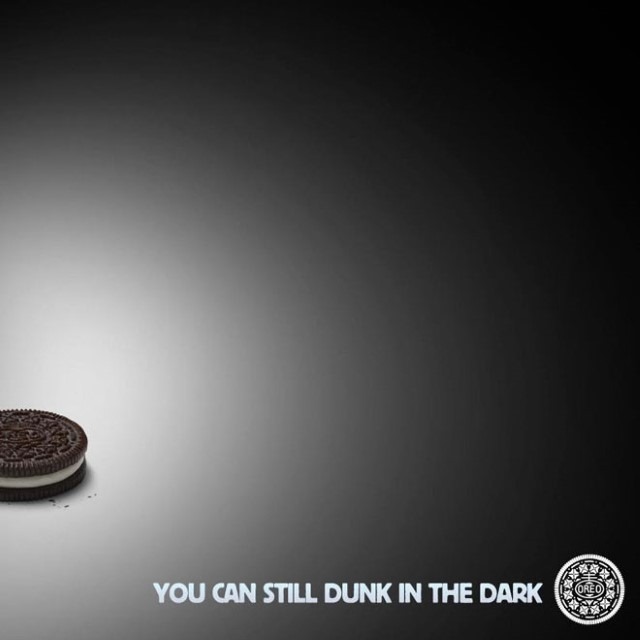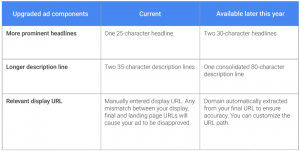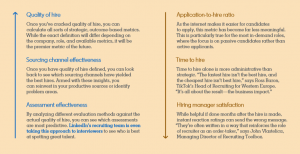![]() by Joe Cox November 4th, 2014
by Joe Cox November 4th, 2014
Content marketers will often tell you that the bane of their professional lives isn’t creating content but coming up with things to talk about in the first place. Some sector’s in particular don’t lend themselves very well to varied and engaging subject matters. Creating talking points and therefore content, around events is therefore a natural and highly relevant way of finding things to talk about.
Tent Pole Marketing
To understanding event driven content is to understand tent-pole marketing. The concept of tent-pole marketing originates in the movie industry where a film’s entire marketing drive was planned around the release date of the movie. The buzz generated around a movie naturally increases as the release date draws nearer and then wanes as it passes further and further into the past. The effect as mapped on a graph resembles a tent pole propping up a canvas (see below).
The concept of tent pole marketing is the same outside of the movie industry in that marketing drives are planned around the arc of the buzz curve; in other words, the conversations that take place before, during and after a given event. Unlike movies though businesses aren’t all about a single event, so identifying the key events to talk about becomes key to your strategy. Once your event has been identified, your content should be planned with regard to where about on the curve it will sit.
Senior Net App Marketing Strategist and Crowdfunding Expert, Richard Bliss, argues that the length of the time horizon (the time after the tent-pole until the curve of the graph flatlines) isn’t just dependent on the event itself, but the conversations that continue to take place and sustain interest in the event. Planning content in the wake of an event should therefore be seen as giving interested parties accessibility to related conversations and content long after the event has taken place, fuelling what he calls Word of Mouth Marketing.
Events Dear Boy, Events
When asked what was most likely to blow governments off course, former British Prime Minister, Harold Macmillan, was said to answer “events dear boy, events.” Although this quote has since been disputed, its universal truth has oft been cited in many instances. It certainly has a lot of bearing on content marketing. Although Macmillan’s was referring specifically to unforeseen events, events of all kinds are often at the heart of any good content marketing strategy and as such marketers must plan for both the foreseen and the unforeseen.
The type of events you can realistically tie your content into are largely dependent on the nature of your business but it goes without saying that holidays such as Christmas, Easter and Halloween are obvious events to create content around. Not only are holidays like this almost universally recognised and celebrated, but with a little thought anyone can generate content around them (even if this just means getting your employees to come into the office in fancy dress and then posting the YouTube footage). Perhaps New Year is one of the most obvious with its themes of summarising the year just passed, or looking to the year ahead and making resolutions; something that any business should be able to generate tons of natural content around.
Other nationally or internationally recognised tent-pole events could include massive sporting events like the Olympics, World Cup or Superbowl and many brands have had a lot of success surrounding some very timely content at these times (check out the three hugely popular Superbowl Vines at the end of this Search Engine Watch piece). Oreo’s tweeted ad after the Superbowl was halted temporarily by a power cut and was the perfect example of reactive marketing, earning 15,000 retweets in just 14 hours.
Holidays and big sporting events are just two examples of how you can generate content ideas, without too much effort. Another method is ‘newsjacking’ which involves finding industry relevant themes on news stories doing the rounds. The key with this or any other event that isn’t directly relevant to your business sector, is to keep it relevant and to avoid pushing credulity or causing offence. A story taking a technical angle on NSA phonetapping revelations might work well for an Internet Security Software company, whereas finding an angle for the same company on the Ebola crisis might be more of a push.
The idea is to keep it relevant. If there’s an obvious angle to any story then exploit it. Stories that are breaking might be here today and gone tomorrow but they drive a huge amount of search traffic so tapping into this can deliver you significant traffic. The other problem with news content of this nature is that it involves planning, creating and seeding content quickly, ideally on the same day the news story is taking place. For many companies, this is simply impractical.
Realistically though, huge national or international events, planned or otherwise are unlikely to generate the kind of meaningful traction you want around your content and as such the tent-pole curve from these kind of events may be somewhat acute. What’s needed is a slightly more considered and industry focused approach.
You Create The Agenda
As we’ve already alluded, events (dear boy) make the world go round. They certainly make your business go round anyway. Every business is driven forward by events, whether they be board meetings, conferences, trade shows, business acquisitions, networking events, speaking engagements, even away days for the finance department. As humdrum and banal as these might seem, compared to the Superbowl or the Olympics, they are of far greater relevance to your business and therefore also the content and conversations you ideally want to be generating.
All of this might seem like an obvious statement but understanding how even seemingly prosaic and quotidian events can generate myriad opportunities for different types of content, is half the battle as it lets your business drive the content agenda. Speaking engagements are a perfect source for content, allowing you to project ideas to an audience long after the event itself has been and gone. Filming or even live streaming someone from your company speaking at an event, allows you to create conversations with people outside of that event and to sustain them for days, weeks or even months after the event has taken place.
If you’re not the kind of business whose thought leaders give talks, then why not record and repurpose a brain storming session or board meeting. There are a host of ideas that could come from this and people are genuinely interested in how other businesses operate and come up with new ideas and strategies (although be careful not to give away too many trade secrets). Seeing this process in action could be a good starting point for all sorts of discussions vis-vis blog posts, Facebook posts, Google hangouts, etc. You could even record a series of these sessions over six or twelve month period and then summarise your evolving ideas and theories in a whitepaper.
Once you start to think about how any event can be brimming with opportunities for conversation and debate, then content ideas should start to flow naturally. Of course the other half of the battle is getting that content in front of the right people at the right time.
Plan, Plan And Plan Some More
The old dictum that ‘content is king’, doesn’t hold sway in marketing these days. Founder of Content Contender, Ryan Law, goes so far as to suggest that it is the biggest fallacy in marketing in fact. The important thing is to understand that the difference between good content marketing and bad content marketing doesn’t just come down to the quality of the content (although it is an essential ingredient). Planning, in other words, is everything.
I’ve listed seven stages below that will set you in good stead when planning your event driven content strategy:
1. Identify your audience: Although it’s tempting to start listing events first, the first step to any marketing strategy is identifying your target audience. Who are your customers and what channels to they consume content on, when do they consume it and most importantly what kind of questions are they looking to have answered. It’s all very well getting your content in front of ten thousand people on Facebook but if they’re all teenage girls and your customer base is mainly middle aged men then something’s gone very badly wrong.
2. Event / topic research: There are a huge number of ways to go about this. The obvious ones to tick off are events your business is attending or hosting, speaking engagements and the like. Then go onto list industry specific events, such as trade shows. Finally go onto jot down the big holidays such as Christmas, Halloween and New Year’s Day, as it should always be possible to create content off the back of these.
3. Creating an event diary: Mapping relevant events into an event diary will help you plan your editorial calendar and perhaps more crucially, enable you to identify periods of dead time where not much is going on and you may find you have very little to talk about. Planning what to talk about in these event-free periods can be a challenge but there are several strategies you can adopt, including ‘newsjacking’, which we’ve already discussed.
4. Planning your distribution strategy: By distribution we’re basically talking about the three main digital channels: SEO, social media and email marketing. A distribution strategy that utilises all three is going to be your best shot at gaining traction. Elements like timing are also extremely important here. Take a look at this article on Social Media Examiner listing strategies on how to get your Facebook posts noticed for a good starting point.
5. Measuring Success: The holy grail of all content marketers is measuring success accurately. What’s good content and what’s bad should be based upon metrics like resultant conversations, length of conversations and ultimately web traffic, enquiries and sales? This topic is huge and far beyond the scope of this article but Uri Bar-Joseph’s article in Search Engine Land is a good starting point.
6. Content planning: Finally we get down to the content part but before you begin you need to work out what form your content will take. This should tie heavily into the planning you’ve done so far. How many ways can you create content from the same event? If you film an event, could you then write a series of blogs about the film? Maybe you could serialise the film. Think of as many ways as possible you can generate multiple content from a single event but be careful not to milk it.
7. Content repurposing: A clever strategy is to look at how you can repurpose content weeks or even months after it’s been released. This is essentially the art of creating content about content, in an attempt to kick start the conversation again. One strategy is to approach the conversation from a totally different angle. Another strategy could be combining several blog articles into one whitepaper and then giving your customers access to the shiny illustrated PDF version of it, if they sign up to your newsletter. Content that attempts to re-engages conversations on past events like this always walks the tightrope of seeming trite, forced or samey, but if you plan ahead and think outside the box, it’s more than possible you can create regular content about a single event many months after it first took place.
Conclusion
With the proper planning and a little imagination, content can be created off the back of any event but any comprehensive tent-pole marketing strategy should seek to identify and focus in on events that draw the right kind of people towards your business. Event driven content is not just about being part of the conversation, it’s about creating the conversations that other people want to be a part of.
Not every company can pull of an Oreo scale stunt at the Superbowl, but every company has the potential to kickstart an interesting conversation off the back of an event related to their industry. Planning how to do this effectively over time is the hard bit.
Next Steps
- Holiday SEO: 3 Tips to Gear Up for the Season of Giving (by Anthony Mangia)
- Content Marketing Editorial Calendar Templates: The Ultimate List (by Alex Barca)
- How to Market an Event: 50 Event Marketing Tips (by Andy Crestodina)
Post from: Search Engine People SEO Blog
Tent Pole Marketing: How To Tie Your Content To Any Event
—
Written by Joe Cox, Bespoke Digital.
The post Tent Pole Marketing: How To Tie Your Content To Any Event appeared first on Search Engine People Blog.
(533)







